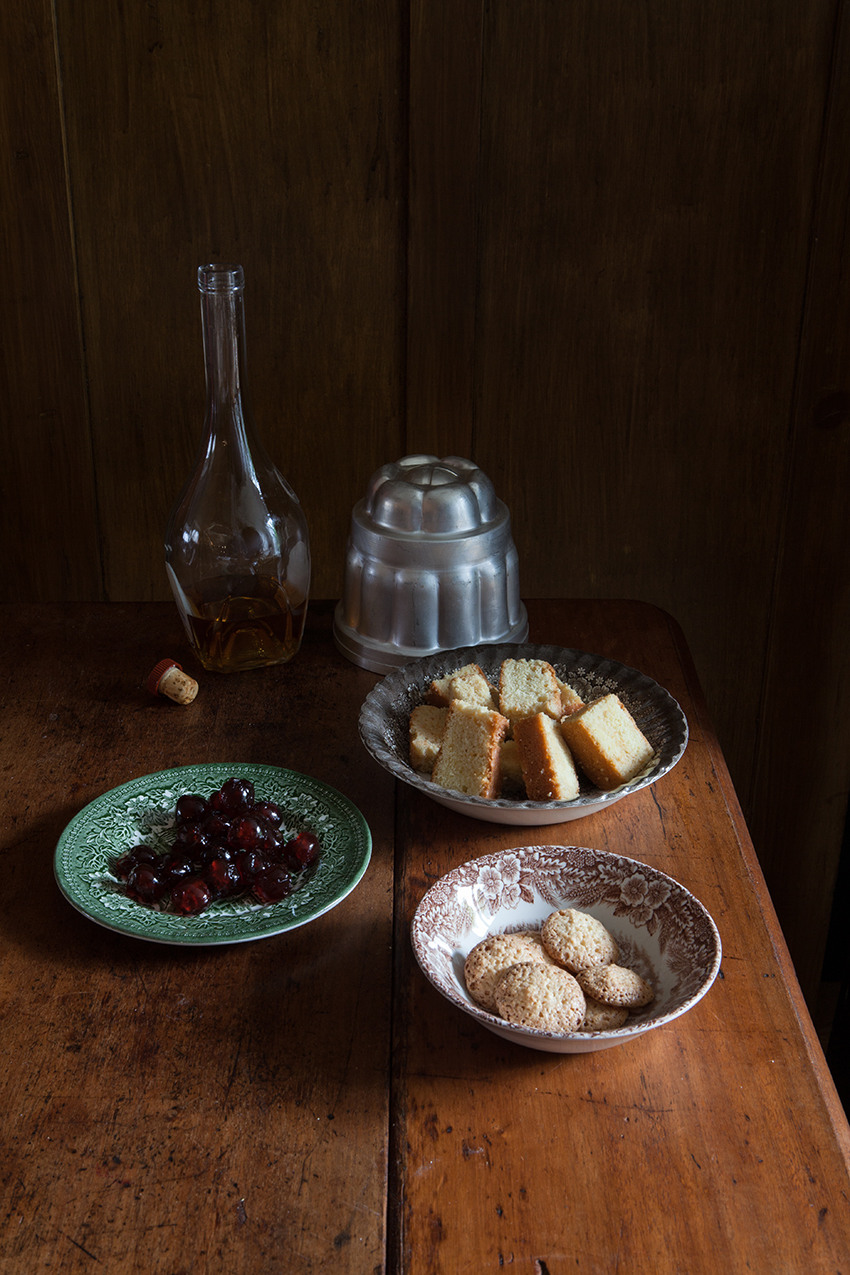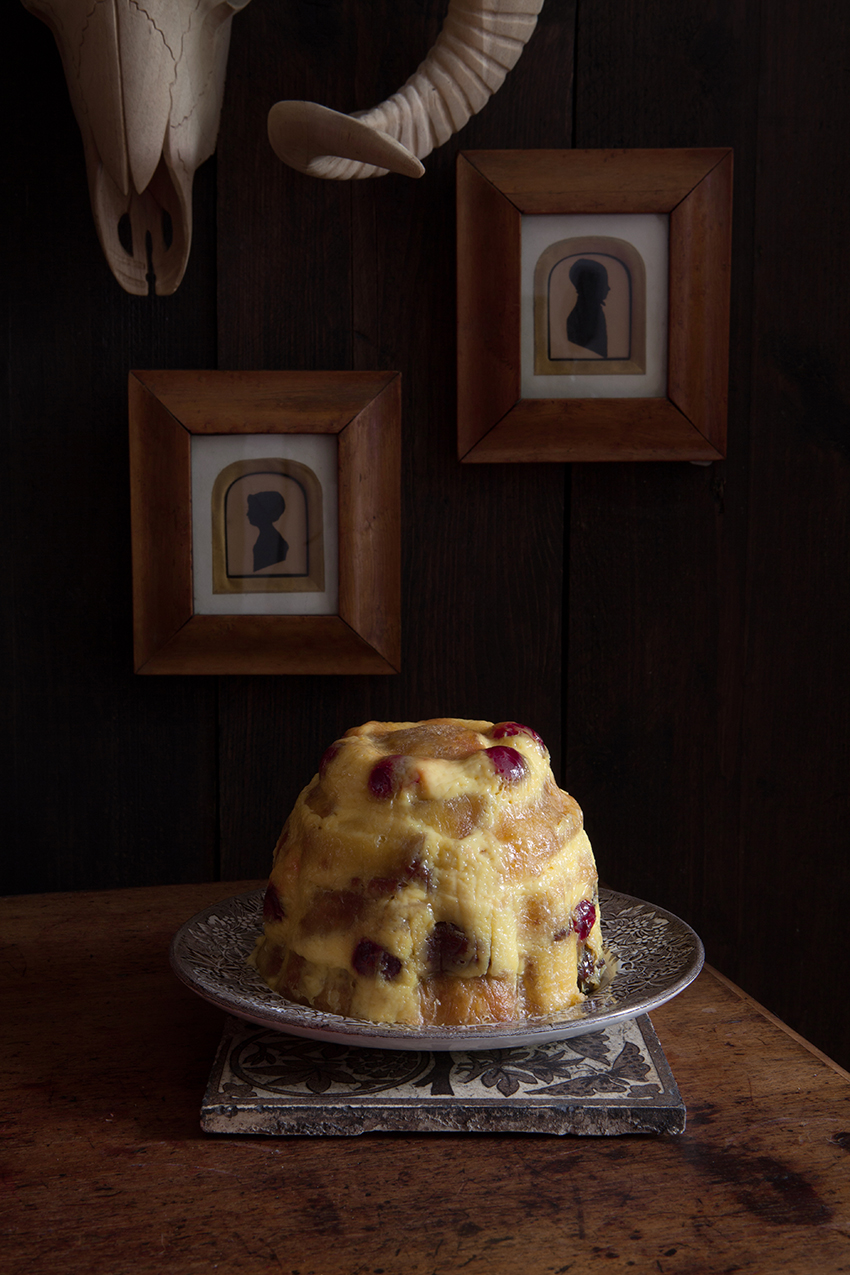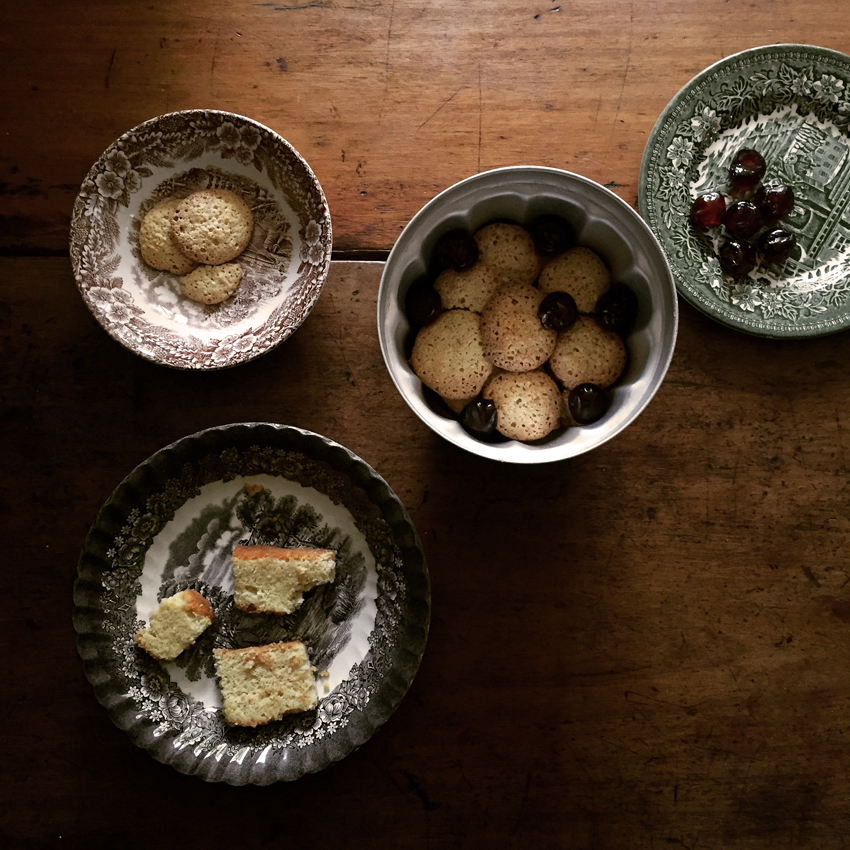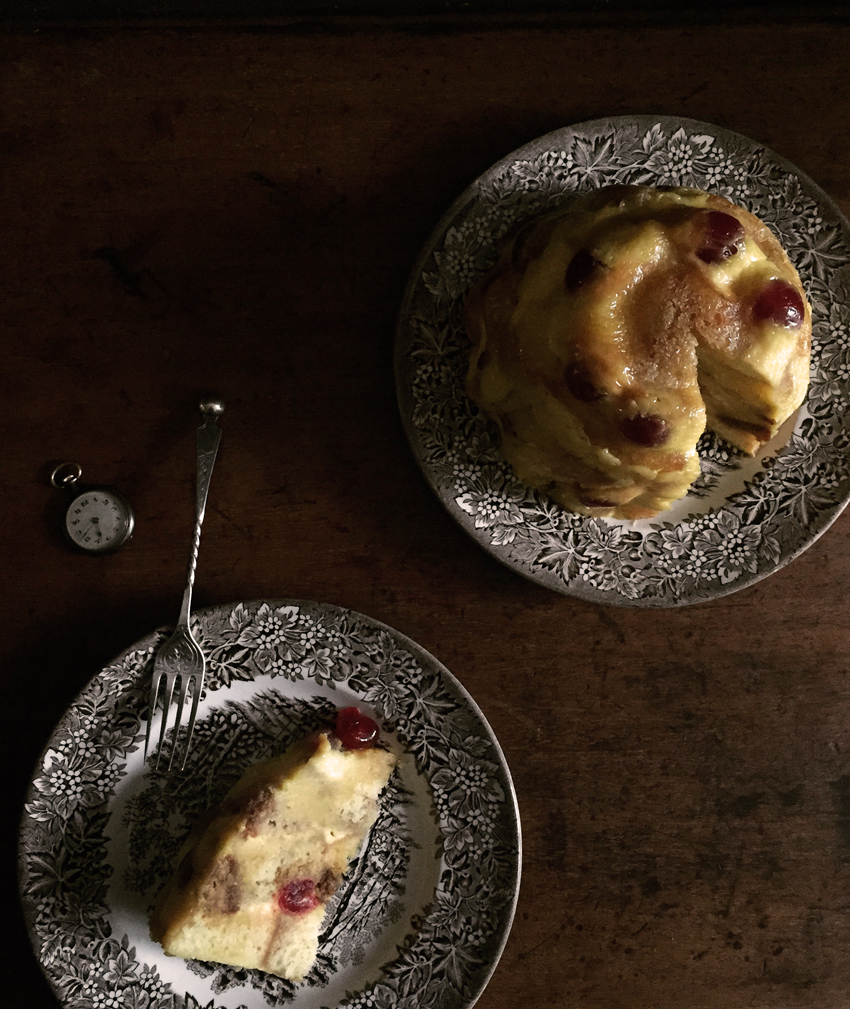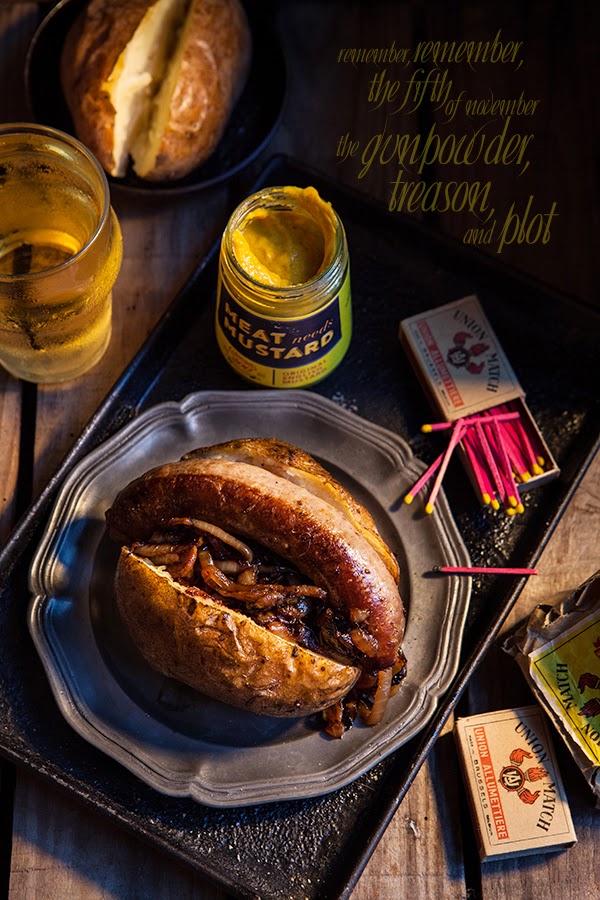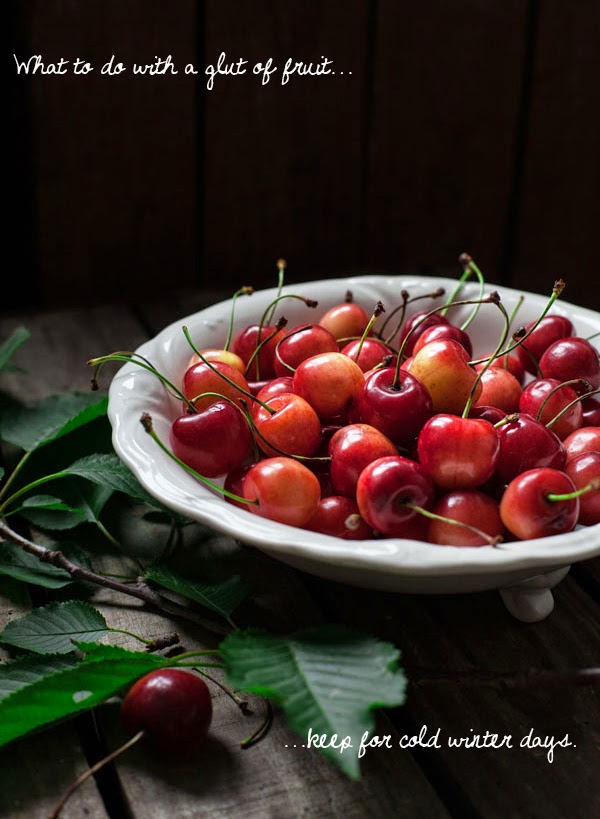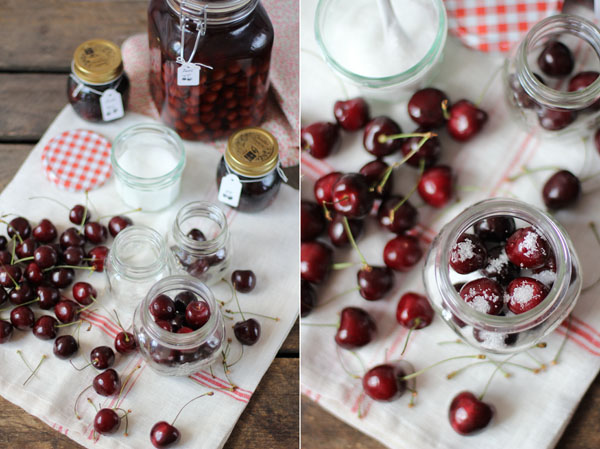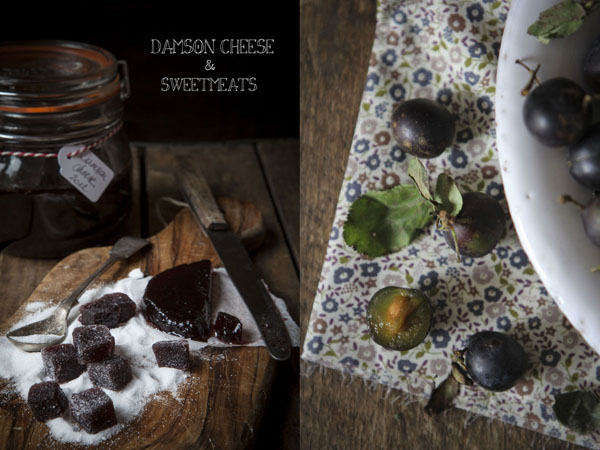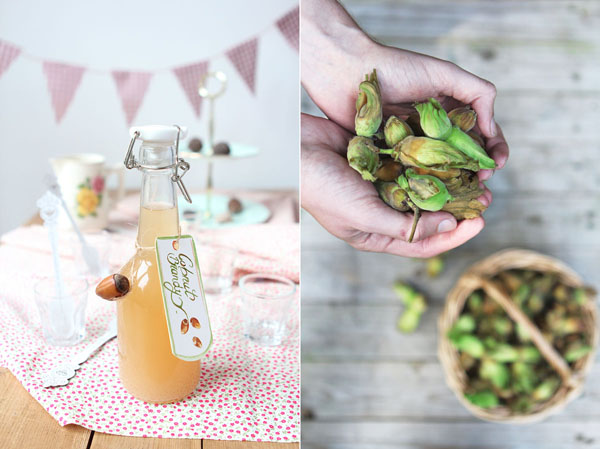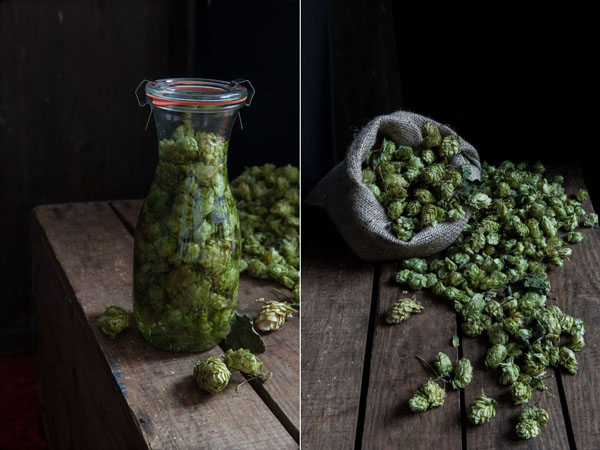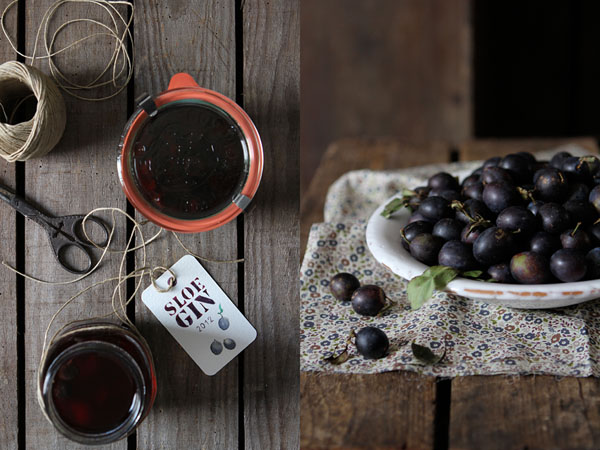The post Cabinet Pudding – Or what to do with stale cake and booze appeared first on Miss Foodwise.
]]>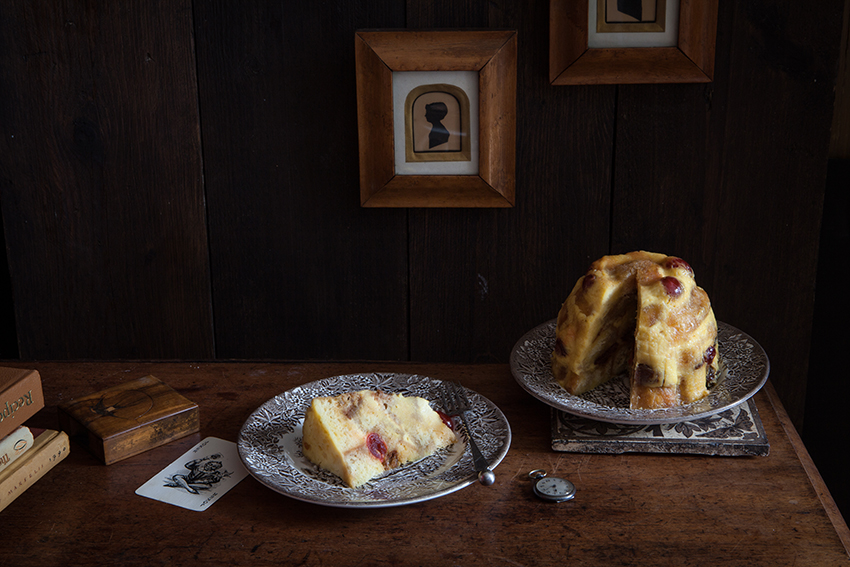
Let me share with you a recipe from Pride and Pudding, my debut book that was festively launched in London’s Borough Market two weeks ago. There is also good news if you haven’t ordered the book yet! The Amazon editorial team has not only included Pride and Pudding in their ‘Books of the Month’ – this week it is also part of their ‘Deal of the Week’ which comes with a 50% discount only this week. (Get it here >) Meaning it will only set you back a tenner! It looks like sales are going splendid as I haven’t seemed to have lost my spot in the first 10 of the top 100 Bestsellers. As an author you do fear no one will buy your book. As do you fear bad reviews and negativity. So if you have a moment and you like the book, Amazon reviews do make a difference.
Now back to the actual order of the day. Cabinet pudding was a favourite on Victorian tables, the first recipes for it appeared in the early 19th century, though similar puddings had been made long before then. It is also sometimes called Newcastle pudding, diplomat pudding or Chancellor’s pudding, though the connection with politics isn’t clear. Recipes also vary. There are theories about the name but none seemed to hold much truth to them.
Most recipes are tipsy puddings – much like a trifle – with pieces of sponge cake or sometimes even plain buttered bread or biscuits soaked in alcohol layered with dried fruits and custard. These are placed in a fancy mould and the pudding is then steamed.
This makes for a very satisfying pudding, I must admit I’m game for any pudding containing decent booze. There’s just something about a alcohol soaked cake, especially when not overly sweet and softly steamed like this one. It is so moist, it really doesn’t need anything else, and it is better on the next day. The best result however is obtained when using a home made sponge cake, or one that you have purchased from an artisan bakery. This because the cake should not disintegrate, but hold all that alcoholic liquid remaining quite in shape. But also because you can keep an eye on the sweetness, flavourings and other ingredients which are often added to keep the cake from going mouldy while it should actually just go stale.
I like to search out good candied cherries for this pud, as it is a pudding I will not make on a plain old tuesday, I like to go the extra mile and make it as best as it could be. Don’t use those marashino cherries in a jar, just dry candied but still looking plump and juicy.
When it comes to the ratafia biscuits needed, decent amaretti biscuits will do just fine. Or if you have stale ratafia’s left over from another time, then of course those will work splendidly.
Makes 1 pudding in a 1 litre (35 fl oz/4 cup) fancy mould
- 190 g (6. oz) stale sponge cake (or us the recipe in my book)
- 10–15 ratafia biscuits or amaretti biscuits (or us the ratafia biscuits recipe in my book)
- cognac or dark rum, to taste
- custard sauce 1/2 recipe see below
- (see page 338)
- 10–15 glaceed cherries
For the Custard (you need half of this, but you can use it to serve with it too. But I feel it really is best without)
- 10 egg yolks
- 500 ml (17 fl oz/2 cups) milk
- 500 ml (17 fl oz/2 cups) thick (double) cream
- 50 g (1. oz) raw sugar
- 1 mace blade or cinnamon stick
- 1 bay leaf (optional)
Method
Preheat the oven to 180C (350F).
Slice the sponge cake in 1 cm (3/8 inch) thick pieces and arrange in a deep dish with the biscuits. Drizzle with a generous amount of cognac or rum and let it soak.
Lightly grease the mould (if you don’t want to take any risks getting the pudding out later, line it with plastic wrap – the sort that doesn’t melt in the oven – sticking it to the butter).
Make the custard and let it cool slightly while you fill the mould.
Whisk the egg yolks in a large bowl. Bring the milk, cream, sugar, spice and bay leaf, if using, to a simmer in a saucepan. Strain the hot milk mixture and discard the flavourings. Pour a little of the hot mixture into the egg yolks and whisk thoroughly. Now continue to add the hot milk mixture in batches until fully incorporated and you get a smooth sauce. Pour the mixture back into the saucepan and cook over low heat, stirring constantly with a spatula until just thickened, making sure the eggs don’t scramble.
When just thickened, remove from the heat and pour into a cold bowl. If you don’t want the custard to develop a skin, cover the bowl with plastic wrap.
Place a few cherries in the base of the mould, then add a layer of sponge cake and one of biscuits, then add a few more cherries and another layer of sponge and biscuits. Repeat until the mould is three-quarters full.
Pour in the lukewarm custard then place the mould on top of a trivet or inverted saucer in a deep ovenproof pot that can completely cover the mould. Fill the pot with boiling water halfway up the sides of the mould, place a saucer on top of the mould and put the lid on the pot.
Carefully put the pot in your oven. Leave to steam for 1 hour, then allow the pudding to cool for 5 minutes in the mould before attempting to turn it out on a plate.
Serve with Sack sauce (equal amounts of butter, sugar and sherry or madeira), custard or just on its own, as it shouldn’t be dry.
The post Cabinet Pudding – Or what to do with stale cake and booze appeared first on Miss Foodwise.
]]>The post Bonfire, bangers and riots appeared first on Miss Foodwise.
]]>Two ways with sausages for Bonfire night: Jacket potato bangers and Toad in the hole
Last year on this day I wrote about Guy Fawkes and his connection to the Gunpowder Plot (see Gunpowder, treason and Bonfire Parkin here) and how it came to be that such plot was, well… plotted. I went back to nearly a hundred years before the plot, to see where that seed was sown.
Today I look at the customs that resulted from this failed plot and how it influenced the way we riot and react today to show our dismay, disappointment and disgust for politics and religion.
The trial of the eight surviving conspirators of the Gunpowder Plot was held on januari 27 1606 in Westminster Hall which would have destroyed had their plot been successful. A statute was passed, declaring that deliverance from Gunpowder treason should be remembered every year. From then on each 5th of november there would be a church service at which attendance was compulsory if you were loyal to the King, or at least wanted to pretend to be loyal. It became an annual ceremony to keep the memory of the failed Gunpowder Plot alive. It continued until it was taken out of the prayerbook two centuries later in 1859. But although it was erased from the prayerbook, it was by now rooted into the culture.
In a way the customs of the 5th of november provided a replacement to the pre-reformation holy days of All Saints and All Souls on the 1st and 2nd of November. On these days the churches would be lit with candles, and torches marking the start of winter and darkness. This catholic tradition in its own right had replaced the old pagan rites of Samhain, which celebrated the end of harvest and the beginning of winter. It literally means ‘summer’s end’ and is the primary festival marking the end and the beginning of the year.
When the christians needed to convert the pagans, they gave them the 1st of November, a day on which they could light candles and make lanterns in hollowed turnips, just as they had been doing for generations before christianity spread. The reformation to Protestantism left the people with an empty gap where their 1st of November celebrations used to be, so naturally they embraced the new bonfire tradition after the Gunpowder Plot failed in the first years of the 1600’s.
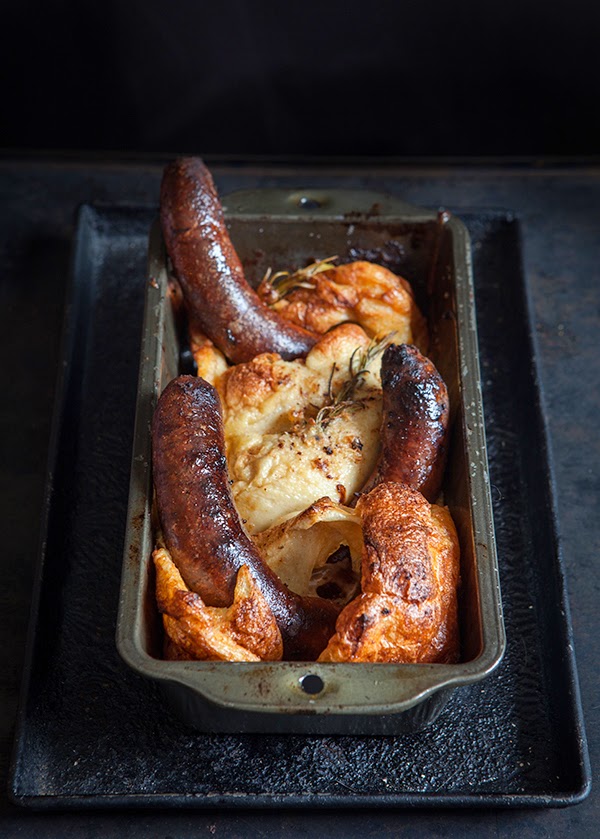 Conveniently to the Protestants, the 5th of november could be used as a celebration of the conservation of Protestantism, a date to mark in the calendar alongside the early death of Queen Mary (a Catholic), the long reign of Queen Elizabeth I (Protestant) and the defeat of the Spanish Armada (to warn off the Spanish Catholics).
Conveniently to the Protestants, the 5th of november could be used as a celebration of the conservation of Protestantism, a date to mark in the calendar alongside the early death of Queen Mary (a Catholic), the long reign of Queen Elizabeth I (Protestant) and the defeat of the Spanish Armada (to warn off the Spanish Catholics).
When Charles I married the Catholic princes of France, people showed their disapproval of the Catholic queen by burning effigies of the Pope and the devil on the 5th of November. We are now situated 20 years after the Gunpowder Plot and the only effigies that were burnt were that of the pope and the devil, not of Guy Fawkes.
In 1647 was described how bonfires went from simply great fires to spectacles with fireworks and explosives including fireballs. And in 1657 Samuel Clarke’s ‘England Remembrancer invoked the happenings of the plot.
After Charles II Restoration in 1660, Samuel Pepys wrote in his diary “This 5th of November is observed exceeding well in the City; and at night great bonfires and fireworks.” The next years up until the year of the Great Fire in 1666 (which was for a short time also blamed on the catholics) he also mentioned Bonfires and festivities which shows us the normality of these celebrations by this time. On one occasion he is driving home with his wife after going to see Macbeth “forced to go round by London-Wall home because of the bonefires.”
Celebrations of the 5th became larger and intense rather than festive after the brother of Charles II Duke of York publicly declared to be a Catholic. This was followed by the Exclusion Crisis to exclude the him from the throne because he was Roman Catholic. When the Tory’s started to declare being agains the Exclusion, this created probably one of the first bonfire night riots. In 1682 the 5th fell on a sunday so celebrations started on monday the 6th. Reputedly crowds of people took to the streets attacking Tories and shouting their support for the King’s bastard son, the Duke of Monmouth, who was Protestant. This Bonfire night, it was not a celebration of the failed Gunpowder Plot, it was a warning and objection against the possibility of being ruled by a Catholic king.
The next year on the 5th, bonfires and fireworks were banned to keep the calm. But you know what, two years later James did succeed Charles and England had a Catholic King… Needless to say that the Bonfire night celebrations were forbidden although the ‘Gunpowder Treason-Day’ church service remained.
Under the rule of James’ daughter Mary Stuart and her Protestant husband William of Orange, the celebrations of the 5th commenced and got entwined with the restoration of the Protestant religion in England by William of Orange. That double meaning didn’t stick though and years after this, it was forgotten and the 5th was yet again a celebration of the failing of the Gunpowder Plot.
Gunpowder Treason-Day’ church sermons changed each year, always highlighting another political event. Leaving the people a reason to take to the streets each year.
By the 18th century the festivities on the ‘fifth’ became less and less fuelled by hatred against Catholics and more about other political issues. The Catholic Relief Acts of 1778 and 1791 made life easier for Catholics, granting them the same rights as Protestants. Of course this sparked resistance leading to a week of rioting in 1780. But eventually the Catholics emancipated, helped by the Irish situation, with Catholic Irish members of Parliament. Of course in Ireland the troubles between the Irish Catholics and English Protestants remained.
Another change happened to the Bonfire night celebrations when anti-catholicism became less acceptable. By the early 19th century effigies of the pope were no longer burnt and the crowds needed another figure to ‘blame’. Strangely enough that figure became Guy Fawkes, the person who was least named in contemporary writings about the Treason and Plot. Although Guy Fawkes is mostly remembered on Bonfire night today, it was Robert Catesby who was chief instigator of the Gunpowder Plot (read my previous post to learn more of the plot).
So why did our Guy Fawkes become the figure of Bonfire Night? We can of course not say for certain why, but in 1793 just before the turn of the century, a play was performed at the Royal Haymarket Theatre. The prelude in one act was entitled: Guy Fawkes or The Fifth of November. In 1835 a comic pantomime called Harlequin and Guy Fawkes: or the 5th of November was performed in London’s Covent Garden. Many different stories about the Gunpowder Plot were told in plays after that, maybe the truth drifted away and the name Guy Fawkes just sounded best in playwright, maybe it was because he was discovered with the gunpowder…
But now Guy Fawkes has become the Gunpowder Plot, and the night of the fifth got often referred to as ‘Guy Fawkes night‘. He became the new face of the tradition, the scapegoat of the Plot, the symbol of opposition and disapproval.
Our story takes more turns in the 19th century with Bonfire night celebrations turning violent and dark. Victorian times saw the coming of a different sort of celebration, a night of rioting and criminal behaviour. A night when the honest should stay indoors and the dangerous ruled the streets.
The processions of ‘the night of the fifth’ would be fired with local social issues of politics and religion. They became manifestations, uprise agains local authorities and they became so dangerous and organised that they needed another organised organisation to contain them. So the police force grew to counter the protesters.
Today we live in a time with organised demonstrations, approved by the local authorities and contained for the safety of the protesters as well as the opponents and those who have nothing to do with it. But when the demonstrations do get ugly today, we see Guy Fawkes appear in the crowds…
Much like in the early 19th century plays about the Gunpowder Plot, a movie was made from a 1980’s graphic novel in 2005. ‘V for Vendetta’ is set in a near-future dystopian society in England, with the main character being ‘V’ a man wearing a Guy Fawkes mask, who wants to destroy the corrupt fascist regime and its leaders. One of the authors of the graphic novel commented that “The Guy Fawkes mask has now become a common brand and a convenient placard to use in protest against tyranny – and I’m happy with people using it, it seems quite unique, an icon of popular culture being used this way.” By many political groups the film was seen as an allegory of oppression by government. Anarchists, libertarians and activists of any kind have used the Guy Fawkes mask in their demonstrations after the movie came out. It has been seen in demonstrations agains the G8 summit and in other economical and political protest. It has become the emblem of anonymity and dissent.
The ‘Guy’ has gained another face, 400 years after he was just one pawn of the Gunpowder Plot. He has now become the face of disappointed people, the face disapproval in modern times. The face saying, we have had enough… For now at least.
On to the food part of this post. Bonfire
societies organise the Bonfire parades now in a safe and family
friendly manner. The streets of Lewes particularly are the place to be
for elaborate bonfire displays. People watch the parade and the fireworks and look forward to warming their hands on hot food and drink.
For this years bonfire night I give you two ways with bangers which are perfect for bonfire night celebrations at home. Toad in the hole is a traditional meat & batter pudding dish that evolved from the Yorkshire pudding-type puddings and other types of fired pudding.
It is bound to be a success with the little ones as who doesn’t love a good old proper sausage. The other dish is a banger jacket potato, an easy dish that even the most inexperienced cook could make. The potato just needs time to cook in the oven so do that in advance. It’s a perfect little bomb of warmth when you are planning to do some bonfiring of your own in the garden!
Toad in the hole
- good quality sausages, 3 or 4
- a few sprigs of rosemary (optional)
For the batter
- 280 ml milk
- 110 g plain flour
- a pinch of salt
- 3 medium eggs
preheat your oven to max 250° C
Fry your sausages in sunflower oil in a pan until nearly done
Pour 1 cm of sunflower oil into a baking stray or cake tin and place in the middle of the hot oven.
Place a larger tray underneath in case the oil drips over, you don’t want extra cleaning afterwards
Make your batter in the manner of making pancake batter
When your oil is hot, you will see as it will be spitting, arrange your sausages into place along with the oil you still have in your pan from frying your bangers
Carefully but swiftly pour the batter into the hot oil, stick in the rosemary sprigs and close the oven door. Bake for 20-25 minutes until puffed up and nicely colored.
Serve with mustard, braised red cabbage, jacked potato or mashed potato and caramelised onions if you like
To braise red cabbage
- red Cabbage
- a cooking apple, cubed ( for a football size cabbage you need 1 large cooking apple)
- a teaspoon of cinnamon
Cut your cabbage very finely, and heat some butter in a pan.
Add your cabbage and apple and braise, adding a little water when needed.
When soft, spice with a little honey and cinnamon
Serve warm, o so good with sausages
—————————————————————————————————-
Jacket potato bangers
For the potato
- 1 potato per person You need a floury kind like a Maris Piper, King Edward, or for Belgians ‘Bintje frietaardappel’
- +- 20g coarse sea salt
- good quality sausages
- 3 onions, braised and caramelised
Wash the potatoes and let them dry
Preheat your oven to 220° C
Put your salt in a tray and roll each potato in the salt and rub it in
Prick your potato with a toothpick a few times to prevent them bursting
Place the potatoes straight on the rack in the middle of the oven
Bake for 1 hour, then squeeze the potato slightly to see if it appears soft inside, if that doesn’t appear so, place back in the oven for another 15-30 minutes.
When the potatoes are nearly ready or when you are about to have dinner caramelise some onions, add one teaspoon of pomegranate molasse of balsamic vinegar, whatever you prefer and let it become nice and sticky. You could do this in advance too and just cook the sausages when you need them.
Finally fry your sausages in oil or butter, I prefer butter and oil in this case. Finish them off with 10 min in the oven along with your potatoes to heat them up again or on their final bake.
Then cut into the potato, add some of that caramelised onion, add a banger and serve!
Also very good with braised red cabbage.
Pudding!
Last years Bonfire parkin might take your fancy, find the recipe here >
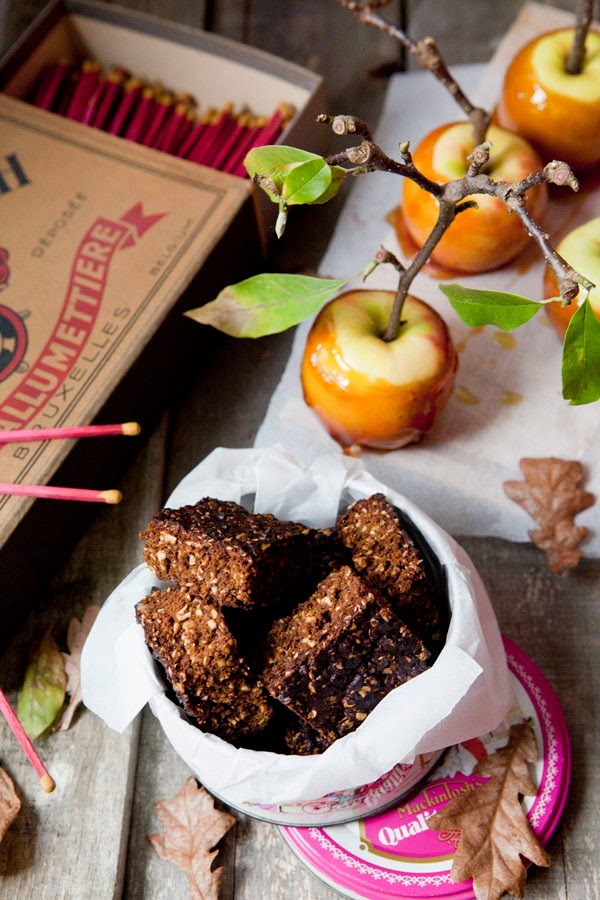 |
| Bonfire Parkin |
What are you doing for bonfire night?
The post Bonfire, bangers and riots appeared first on Miss Foodwise.
]]>The post What to do with a glut of summer fruit appeared first on Miss Foodwise.
]]>Hello you lovely lot, I am sorry for not posting as frequently as I did before. Life just has been terribly busy and choices have to be made. It is wonderful, it is glorious but I do need to find a balance so I can find the time again to share stories with you.
I had a lovely few weeks, I spoke at Europe’s largest Food Blogger Conference, Food Blogger Connect in London and a week later I was the main speaker at a blogger event in Brussels, for those who I have met there, welcome to the blog!
I am getting ready to leave for London again, where I will be living out of my suitcase while shooting an exciting upcoming cookery book. (not mine, haven’t had time for mine!) The week after that I am traveling to Dorset to be a judge in the Great Taste Awards again. Lots of beautiful food and drink to judge and after that some more lovely food at the glorious Great Taste dinner at Brett Sutton’s new place.
After that, it is back to London for a week to shoot a book.
So it is fair to say, the next time you hear from me on here will be august… I hope!
To answer some questions I have had from you guys on social media and via email when I posted my cherry brandy picture on facebook, this is what you can do with your summer fruit! I like to preserve mine, to keep for the cold winter and autumn days, to bring a little sunshine on your table. It is sun in a jar, it is happiness. So when you have a glut of fruit, get your jars out and drain them in alcohol or sugar to keep them for when you most need it, when it is chilly and rainy. Here below are some of my recipes for preserves, and at the end I’ve added some links to other recipes on other websites. Enjoy the summer fruits!
My favourite: Drunken Cherries, or Cherry Brandy.
We call it Kriekenborrel in Belgium and I have been making it since I was a little girl. In fact my oldest jar is from 1998, which is when I started making them myself. I now have a jar most years, sometimes more than one to give as gifts for christmas (oh yes, I used the ‘C’ word in summer)
It’s just a wonderful way to preserve a cherry, you can use them served with vanilla ice, baked in cakes or puddings and just as they are in tiny little delicate glasses.
Cherry Brandy Find the recipe here
Next up is Raspberry vinegar.
The colour of this vinegar stays lovely and red even a year later, it looks the part on your larder and even more pretty drizzled over a green salad.
The vinegar is also okay to drink, but only by the thimble full as it is quite strong and pungent. As you can guess, this is also a great gift to give someone who will appreciate it.
Raspberry Vinegar Find the recipe here
How about a use for those damsons who are ripening on the trees at the moment? I like to make a damson cheese, it keeps for long and becomes better with age. It is the kind of preserve you can enjoy with cheese, especially a blue veined one or a fresh goats cheese as well. Fruit cheeses have been made for centuries, they are excellent to preserve a summer haul of fruit and are wonderful to tuck into. Also lovely when you cut cubes from the cheese and dip them in fine sugar to serve as a home made sweet. These sweetmeats often contained a lot of spices to aid digestion during and after a meal.
Damson Cheese Find the recipe here
When august arrives, so do the Kentish cobnuts. They are a personal favourite of mine as well as of Victorian ladies who used to nibble them from delicate bonbon dishes.
I made a cobnut brandy, and the recipe is still experimental but maybe you’d like to join in on the experiment as it needs some ageing!
Cobnut Brandy Find the recipe here
End of summer is marked by the hop harvest and while hops are traditionally used for beer, they make a mean hop brandy as well. Pick them when they are green, or just dried so that they still have all the essential flavours for this drink. My teacher in beer sommelier school uses a Belgian alcohol called Jenever for this preserve but you can try to use any clear alcohol with a min of 40 % alcohol as well.
While you are working with the hop flowers, rub some between your hands and smell the hops, it made me appreciate hoppy beer better and now I enjoy the hoppier the better.
Hop Brandy Find the recipe here
When going into autumn you will, if you are lucky, start seeing small sloes growing on the whimsical trees. They say you need a first frost before you pick them, then they are ready to bottle, preserve and keep. The traditional way to preserve sloes is in gin, Sloe gin has been a favourite winter tipple for a very very long time and still very popular today. You can also make sloe cheese from the tart little things, just follow the recipe for damson cheese.
Sloe Gin Find the recipe here
Lemon and strawberry preserve by Juls Kitchen, I have a jar of that in my larder and can’t wait to open it!
Mustard by Juls Kitchen, I tasted it on a sunny autumn day in Tuscany, it was great!
Apricot jam by Emiko Davies, just beautiful
Lemon marmelade by Emiko Davies, your larder needs it, your cakes too.
Rose petal jam by Emiko Davies, for the romantic
Seville Orange marmalade by The Wednesday Chef, better be prepared because it will take some months for them to arrive but you need this for your toast
Strawberry Jam by Jamie Oliver, can’t go wrong, it’s strawberry and it’s Jamie Oliver.
Plum and peach jam by Ms Marmite Lover, love the lavender in the jam
I can go on for ages, maybe look into a book? I like Salt, Sugar, Smoke by Diana Henry.
This is it for now, hopefully I’ll be back soon!
The post What to do with a glut of summer fruit appeared first on Miss Foodwise.
]]>